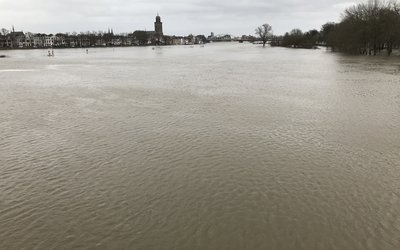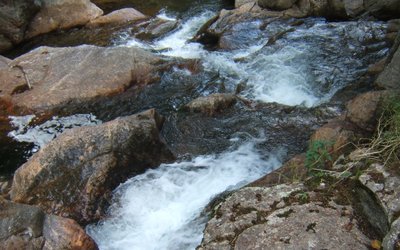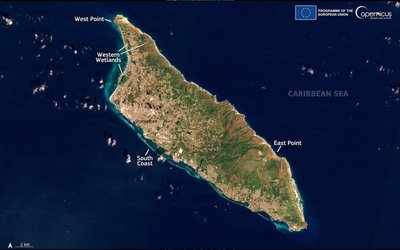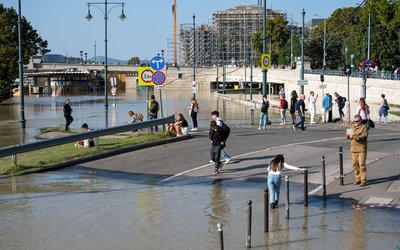
A fingerprint of climate change?
In recent decades, ‘societal change not climate change was the overwhelming cause of increased disaster losses.’ This was concluded from an analysis of 53 studies into economic losses by extreme weather events in the past two decades, distinguishing between the contribution of climate change and socioeconomic developments. More than 90% of these losses were due to floods and storms.
River floods are the most dominant extreme weather event we have seen in the media in the past years. The impact of river flooding on societies seems to be increasing. If this is not due to climate change, land use of river floodplains must have changed to such an extent that river flooding now causes far more damage than it used to.
We are losing floodplains at a rapid rate
In a new study, researchers found that the world has lost 600,000 square kilometers of more or less natural floodplains in the period 1992-2019. People have converted 460,000 square kilometers of floodplain to agricultural land and developed an additional 140,000 square kilometers for housing, industries, etc. Relative land use change was largest in Europe: in these 27 years, land use has changed in almost 10% of Europe’s floodplain areas. Needless to say, this change means that far more assets are now exposed to flooding, and flood risk has increased. In this period, nearly 60% of the urbanization in global floodplains occurred in Europe.
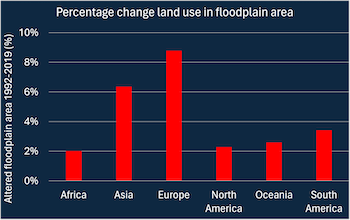
Room for the river
In the Netherlands, extremely high river discharges of the Rhine and Meuse in the early 1990s were a wake up call that these rivers had lost much of their floodplains in the past. This led to a change in policy, from raising dikes to creating more ‘Room for the river’. In recent weeks, the extremely wet weather in Western Europe caused many floods, but there was nothing to worry about in the Dutch Rhine and Meuse. Creating more room for the rivers was clearly a good decision.
Remarkably, the choice made by the Dutch seems to be rather unique. The researchers that quantified the loss of natural floodplain area, compared the rate of loss during the period 1992-2019 with data for an historical period of 1965-1992. This comparison illustrates that we are now losing more natural floodplain area each year, globally, than we used to half a century ago.
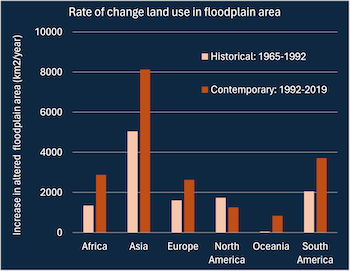
It's time to bend the trend
The conclusion that ‘societal change not climate change is the overwhelming cause of increased disaster losses’ is illustrated by the increased pace of floodplain conversion into agricultural areas and urbanization. More and more assets – and people – are now exposed to river flooding. No wonder that river flooding is dominating the news these days. Bending this trend, and creating more room for the river, is needed to control or reduce flood risk. This change in policy will become more urgent once climate change starts to increase flood probability as well.
Unfortunately, creating more room for the river is the exception rather than the rule.
Sources:
- Rajib, A., 2023. Scientific data 10: 499, doi: 10.1038/s41597-023-02382-x.
- Nardi, F. et al., 2019. Scientific data 6: 180309, doi: 10.1038/sdata.2018.309.

